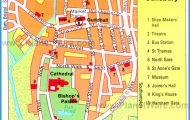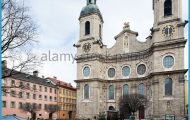The sculpture garden blends culture and nature.
With a commission of 15 per cent of all sales to be paid to the Garden’s Development Fund, the positive results of this partnership have been massive. A new sculpture garden’ with all-access pathways, information bloglets, cultural events and training workshops has brought tremendous credit and a significant flow of funds to the Garden.
The striking Wild Seedpod’ of Arthur Fata was donated to Kirstenbosch by the Anglo American and De Beers Chairman’s Fund on the opening of the new Visitors’ Centre over the years, only a few select works of art have been accepted and placed on permanent display in Kirstenbosch – two of which are the striking Wild Seedpod’ of Arthur Fata, which is a focal piece in the Visitors’ Centre courtyard, and a massive work by Bernard Matemera, Speak less, see more’ – at the Garden Centre entrance. Another permanent installation is the family group of gorillas – hewn from fallen Stone Pines from Table Mountain by Cape Town sculptor Sam Allerton. Sensitively sited within the rainforest’ of the Dell, the gorillas tell the story of Africa’s threatened species and habitats.
Much debate attended the question of whether to permit weddings in the Garden. In the end, discretion won the day: weddings are permitted, but only if the bridal party uses a private pathway to access the Gazebo, well hidden in a romantically beautiful corner of the Garden, and on condition that they use the conference centre or restaurant for the wedding reception. The advantage of being able to offer both kosher and halaal kitchen facilities has proven particularly popular among both Jewish and Muslim communities.
The Old Mutual Conference Centre is an ideal facility for weddings and corporate functions.
A development of major value to expanding the Garden’s outreach has been the Conference and Exhibition Centre, co-sponsored by the Old Mutual, a consistent supporter of Kirstenbosch. Located within the Visitors’ Centre complex, the conference facilities have been used almost continuously since their inauguration in 1998. Of special value has been their use by embassies, government ministries, multinational corporations and other influential organisations – bringing to the Garden the power brokers of both society and the economy. Many of the country’s Cabinet Ministers have visited the Garden, initially in the course of their official duties rather than as gardeners or nature lovers, but have later returned with their families and friends. The name Kirstenbosch has gradually permeated all sectors of society – and, with it, the association of peace, beauty and pride.
South African sculptor Dylan Lewis has presented several of his evocative works in the Garden.
A living wall encloses a gallery for a temporary exhibition of sculpture by Dylan Lewis.
Far from becoming a theme park, Kirstenbosch has diversified its interest and enriched its visitor experience, resulting in increased visitor numbers and increased visitor spend.
Visitor numbers nearly doubled between 1990 and 2010. Kirstenbosch remains one of South Africa’s premier tourist destinations.
By 1990 the Garden was receiving some 400 000 visitors per year, but its operational costs were dependent on an 86 per cent subsidy from government. How to increase visitor numbers was one challenge; as important was how to keep them coming, and how to entice them to spend more on each visit.
As a government-supported public entity, the Garden must be potentially accessible to all South Africans, offering reasonably priced facilities and services. The profit motive should focus, by contrast, on activities that are not basic to one’s enjoyment of the Garden. Special entry fees are provided for school-goers, pensioners and special-interest groups, and members of the Botanical Society enjoy free entry. Many facilities such as the Garden shops, coffee bar and exhibition hall are free of admission charges. Kirstenbosch is accessible to all.
The Marquee Lawn provides an ideal setting for thematic garden parties.
The Moyo Kirstenbosch Restaurant sits at the foot of the Garden, close to visitor parking.
The most ambitious project ever undertaken by the Botanical Society was the funding, with the support of many friends of the Garden, of the Conservatory. The roof of the Conservatory was designed to provide maximum cross and vertical ventilation – providing a cool house rather than the conventional hothouse.
A visitor’s experience of a botanical garden must obviously start with the botanical spectacle and the Garden’s setting – both natural and man-made. Repeated surveys of visitors’ comments have indicated that it is the peace, tranquillity, natural beauty and the scent of fynbos’ that they remember most. But these can form the backdrop to many other experiences, which can both entertain the visitor
Sweeping lawns, placid water features and a rugged mountain backdrop provide harmony and tranquillity to the lower garden. Visitor surveys indicate that the most cherishedfeatures of Kirstenbosch are the peace, safety and unique sense of place that the Garden evokes.






